The Biophysical Basis Underlying Gating Changes in the p.V1316A Mutant Nav1.7 Channel and the Molecular Pathogenesis of Inherited Erythromelalgia
- PMID: 27653502
- PMCID: PMC5031448
- DOI: 10.1371/journal.pbio.1002561
The Biophysical Basis Underlying Gating Changes in the p.V1316A Mutant Nav1.7 Channel and the Molecular Pathogenesis of Inherited Erythromelalgia
Abstract
The Nav1.7 channel critically contributes to the excitability of sensory neurons, and gain-of-function mutations of this channel have been shown to cause inherited erythromelalgia (IEM) with neuropathic pain. In this study, we report a case of a severe phenotype of IEM caused by p.V1316A mutation in the Nav1.7 channel. Mechanistically, we first demonstrate that the Navβ4 peptide acts as a gating modifier rather than an open channel blocker competing with the inactivating peptide to give rise to resurgent currents in the Nav1.7 channel. Moreover, there are two distinct open and two corresponding fast inactivated states in the genesis of resurgent Na+ currents. One is responsible for the resurgent route and practically existent only in the presence of Navβ4 peptide, whereas the other is responsible for the "silent" route of recovery from inactivation. In this regard, the p.V1316A mutation makes hyperpolarization shift in the activation curve, and depolarization shift in the inactivation curve, vividly uncoupling inactivation from activation. In terms of molecular gating operation, the most important changes caused by the p.V1316A mutation are both acceleration of the transition from the inactivated states to the activated states and deceleration of the reverse transition, resulting in much larger sustained as well as resurgent Na+ currents. In summary, the genesis of the resurgent currents in the Nav1.7 channel is ascribable to the transient existence of a distinct and novel open state promoted by the Navβ4 peptide. In addition, S4-5 linker in domain III where V1316 is located seems to play a critical role in activation-inactivation coupling, chiefly via direct modulation of the transitional kinetics between the open and the inactivated states. The sustained and resurgent Na+ currents may therefore be correlatively enhanced by specific mutations involving this linker and relevant regions, and thus marked hyperexcitability in corresponding neural tissues as well as IEM symptomatology.
Conflict of interest statement
The authors have declared that no competing interests exist.
Figures

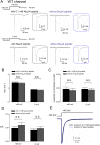
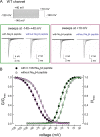
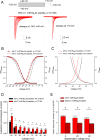


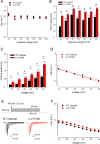
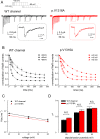
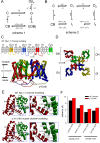
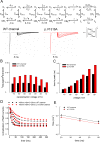
Similar articles
-
Anomalous enhancement of resurgent Na+ currents at high temperatures by SCN9A mutations underlies the episodic heat-enhanced pain in inherited erythromelalgia.Sci Rep. 2019 Aug 22;9(1):12251. doi: 10.1038/s41598-019-48672-6. Sci Rep. 2019. PMID: 31439884 Free PMC article.
-
Inhibition of Navβ4 peptide-mediated resurgent sodium currents in Nav1.7 channels by carbamazepine, riluzole, and anandamide.Mol Pharmacol. 2011 Oct;80(4):724-34. doi: 10.1124/mol.111.072751. Epub 2011 Jul 25. Mol Pharmacol. 2011. PMID: 21788423 Free PMC article.
-
Biophysical mechanisms underlying tefluthrin-induced modulation of gating changes and resurgent current generation in the human Nav1.4 channel.Pestic Biochem Physiol. 2024 Mar;200:105833. doi: 10.1016/j.pestbp.2024.105833. Epub 2024 Feb 20. Pestic Biochem Physiol. 2024. PMID: 38582596
-
Altered sodium channel gating as molecular basis for pain: contribution of activation, inactivation, and resurgent currents.Handb Exp Pharmacol. 2014;221:91-110. doi: 10.1007/978-3-642-41588-3_5. Handb Exp Pharmacol. 2014. PMID: 24737233 Review.
-
Resurgent current of voltage-gated Na(+) channels.J Physiol. 2014 Nov 15;592(22):4825-38. doi: 10.1113/jphysiol.2014.277582. Epub 2014 Aug 28. J Physiol. 2014. PMID: 25172941 Free PMC article. Review.
Cited by
-
Changes of Resurgent Na+ Currents in the Nav1.4 Channel Resulting from an SCN4A Mutation Contributing to Sodium Channel Myotonia.Int J Mol Sci. 2020 Apr 8;21(7):2593. doi: 10.3390/ijms21072593. Int J Mol Sci. 2020. PMID: 32276507 Free PMC article.
-
Changes in Resurgent Sodium Current Contribute to the Hyperexcitability of Muscles in Patients with Paramyotonia Congenita.Biomedicines. 2021 Jan 8;9(1):51. doi: 10.3390/biomedicines9010051. Biomedicines. 2021. PMID: 33430134 Free PMC article.
-
[Functional vascular acrosyndromes].Inn Med (Heidelb). 2022 Jun;63(6):591-600. doi: 10.1007/s00108-022-01340-w. Epub 2022 May 16. Inn Med (Heidelb). 2022. PMID: 35925129 Review. German.
-
Burning pain: axonal dysfunction in erythromelalgia.Pain. 2017 May;158(5):900-911. doi: 10.1097/j.pain.0000000000000856. Pain. 2017. PMID: 28134657 Free PMC article.
-
Anomalous enhancement of resurgent Na+ currents at high temperatures by SCN9A mutations underlies the episodic heat-enhanced pain in inherited erythromelalgia.Sci Rep. 2019 Aug 22;9(1):12251. doi: 10.1038/s41598-019-48672-6. Sci Rep. 2019. PMID: 31439884 Free PMC article.
References
-
- Catterall WA. From ionic currents to molecular mechanisms: the structure and function of voltage-gated sodium channels. Neuron. 2000;26(1):13–25. . - PubMed
LinkOut - more resources
Full Text Sources
Other Literature Sources

